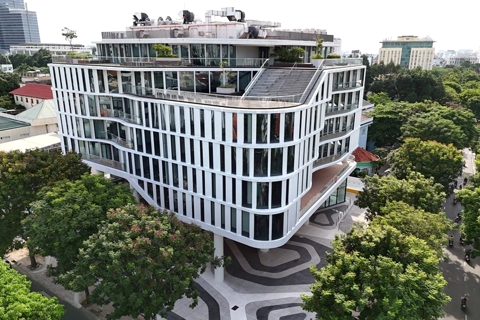Business
VND remains stable in face of potential firmer USD: VinaCapital
Jun 05, 2018 / 08:32 AM
the Vietnamese dong (VND) is expected to depreciate by about 1-2% against the US dollar in 2018, because Vietnam does not suffer from the issues that have driven much larger depreciations in Vietnam`s EM peers, said Michael Kokalari, Chief Economist at VinaCapital.
In his note, Kokalari cited a number of reasons leading to a surge in the value of USD, including Trump's tax cuts, deteriorating GDP growth in the EU and Japan, as well as Italy's political crisis.
A stronger USD could hurt emerging markets (EMs) in general, including Vietnam, as it prompts investors to withdraw money from those countries, according to Kokalari.
Firstly, USD-denominated debt is more expensive to pay back when the value of the dollar increases - and USD denominated debt in EMs soared over the last decade to nearly US$4 trillion.
Secondly, current account deficit countries (i.e., countries that typically have substantial trade deficits) experience higher inflation when their currencies depreciate, which is because import prices increase following a depreciation of the domestic currency.
And thirdly, foreign "carry trade" investors withdraw capital from EMs when facing exchange rate losses. Kokalari explained that foreign investors pour money into EMs either to achieve high capital gains over the medium‐to-long term in high growth counties such as Vietnam, or to achieve high investment income over the short term by investing in relatively stable countries like India and Indonesia.
The interest rates in countries like India and Indonesia are higher than those in developed markets, so "carry trade" investors put money into those EMs to earn high investment income. However, the extra income generated by this strategy evaporates when the currency of the investee country depreciates - which triggers "hot money" outflows from the country.
This was why Vietnam's stock market sold off dramatically in response to the strengthening USD, even though the free-market value of Vietnam's currency has only depreciated by 0.6% year-to-date (versus 4-6% depreciations in Indonesia, India, Philippines). This is because Vietnam's stock market currently gives investors "high beta" exposure to the MSCI-EM index, which fell in response to a surging dollar, the economist noted.
Nevertheless, the three risks listed above EM economies and currencies stemming from a strong Dollar are not major concerns for Vietnam, because Vietnam's trade surplus should exceed 2%/GDP this year (comparable to last year), because local companies have not borrowed extensively in USD, and because Vietnam's FX reserves have increased from 2.3 months' worth of imports at end-2016 to over 3 months' imports now.
Furthermore, foreign investors generally seek long‐term capital gains in Vietnam, rather than attempting to earn high investment income via the "carry trade", which is typically the main impetus for "hot money" outflows from individual EMs.

Illustration photo.
|
Firstly, USD-denominated debt is more expensive to pay back when the value of the dollar increases - and USD denominated debt in EMs soared over the last decade to nearly US$4 trillion.
Secondly, current account deficit countries (i.e., countries that typically have substantial trade deficits) experience higher inflation when their currencies depreciate, which is because import prices increase following a depreciation of the domestic currency.
And thirdly, foreign "carry trade" investors withdraw capital from EMs when facing exchange rate losses. Kokalari explained that foreign investors pour money into EMs either to achieve high capital gains over the medium‐to-long term in high growth counties such as Vietnam, or to achieve high investment income over the short term by investing in relatively stable countries like India and Indonesia.
The interest rates in countries like India and Indonesia are higher than those in developed markets, so "carry trade" investors put money into those EMs to earn high investment income. However, the extra income generated by this strategy evaporates when the currency of the investee country depreciates - which triggers "hot money" outflows from the country.
This was why Vietnam's stock market sold off dramatically in response to the strengthening USD, even though the free-market value of Vietnam's currency has only depreciated by 0.6% year-to-date (versus 4-6% depreciations in Indonesia, India, Philippines). This is because Vietnam's stock market currently gives investors "high beta" exposure to the MSCI-EM index, which fell in response to a surging dollar, the economist noted.
Nevertheless, the three risks listed above EM economies and currencies stemming from a strong Dollar are not major concerns for Vietnam, because Vietnam's trade surplus should exceed 2%/GDP this year (comparable to last year), because local companies have not borrowed extensively in USD, and because Vietnam's FX reserves have increased from 2.3 months' worth of imports at end-2016 to over 3 months' imports now.
Furthermore, foreign investors generally seek long‐term capital gains in Vietnam, rather than attempting to earn high investment income via the "carry trade", which is typically the main impetus for "hot money" outflows from individual EMs.








